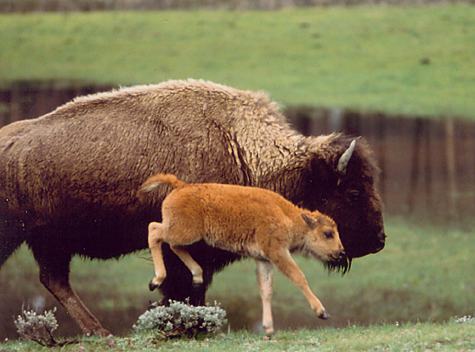|
Western Watersheds Project
Mission statement: Working to protect and restore Western watersheds
by educational outreach, public policy initiatives,
litigation, and by ending incompatible uses of public lands.
RangeWeb
RangeWeb is a mini portal to a family of environmentally oriented web sites that contain a wealth of information
about grazing on public lands. RangeWeb's Search allows you to search all of these web sites as a group, or
individually.
Brucellosis and Yellowstone Bison:
The USDA APHIS (United States Department of Agriculture, Animal and Plant Health
Inspection Service ) page on the disease Brucellosis and Yellowstone Bison.
Buffalo Field Campaign:
Updates from the field. The
only Group Working in Yellowstone 365 days a year! November 1, 2000 - Montana DOL gears up Duck Creek
buffalo capture facility, and the hazing of the YNP buffalo started 10/20/00.
Archive
of Newsletters from the Buffalo Folks / Buffalo Field Campaign.
Centers for Disease Control (CDC) Site:
General as well as technical information on
Brucellosis.
Greater Yellowstone Coalition:
Check for news releases
relating to the bison situation
GYC has a page that lists news articles, editorials and news releases relating to winter
uses in YNP including the raging battle pro and con
the use of
snowmobiles in the park.
The Inter-Tribal Bison Cooperative:
The ITBC is a non-profit 501 (c) (3) tribal organization and is committed to reestablishing buffalo
herds on Indian lands in a manner that promotes cultural enhancement, spiritual revitalization,
ecological restoration, and economic development. ITBC is governed by a Board of Directors, which
is comprised of one tribal representative from each member tribe.
Montana Department of Livestock Brochure
This brochure was produced in 1998 by MDOL. It clearly states that it is the ultimate
intention of the State of Montana is to have a "disease free" bison herd in YNP.
National Academy of Sciences Study:
Published in 1998 - Brucellosis in the Greater Yellowstone
Area. Clickable section of the report can be read
online.
National Park Service Site:
All files available in PDF format:
Winter Use Plans - Final Environmental Impact Statement for the Yellowstone and Grand Teton National Parks
and John D. Rockefeller, Jr., Memorial Parkway.
SUMMARY -
FINAL ENVIRONMENTAL IMPACT STATEMENT
FOR THE INTERAGENCY BISON MANAGEMENT PLAN
FOR THE STATE OF MONTANA AND
YELLOWSTONE NATIONAL PARK
AUGUST 2000
The National Wildlife Federation Site:
Buffalo information page,
including a link to the pdf file "Restoring the prairie: Mending the Sacred Hoop."
PBS Online:
"The NATURE program
AMERICAN BUFFALO: SPIRIT OF A
NATION tells the sad story of how the buffalo nation was destroyed
nearly a century ago by greed and uncontrolled hunting -- and how a few
visionaries are working today to rebuild the once great bison herds. It
offers a remarkable portrait of America's last significant wild bison herd,
made up of a few thousand animals living within Montana's Yellowstone
National Park."
RangeBiome - A Public Rangeland Almanac:
"This page is dedicated to the proposition that the commercial production of domestic livestock is no longer an
appropriate use of the public lands that make up America's Natural Heritage. Articles, papers, links, and
other information in support of A Cowfree 21st Century for the public lands are posted here."
CASH COWS -
THE GIVEAWAY OF THE WEST: San Jose Mercury News Special Report
By many measures, the American West at the end of the 20th century is
more environmentally healthy than a generation ago. But on millions of
acres of public land, one practice still perpetuates environmental
damage that began in the Wild West 150 years ago -- cattle grazing.
Propped up by more than $100 million last year in taxpayer subsidies,
ranchers leasing national forests and range managed by the U.S. Bureau
of Land Management have allowed millions of cattle to grind down native
grasses and trample streams, the lifeblood of the West. Some wildlife
have even been driven to the endangered list.
Yet because hoofprints in streams aren't as dramatic as oil spills, most
Americans aren't aware of the damage. Even fewer realize they pay
corporations and millionaires to create it, all within the law.
A nine-month Mercury News investigation has uncovered the extent to
which wealthy hobby ranchers, agribusiness giants and corporations -
far more than hardscrabble families portrayed in John Wayne movies -
benefit from federal grazing subsidies.
|
